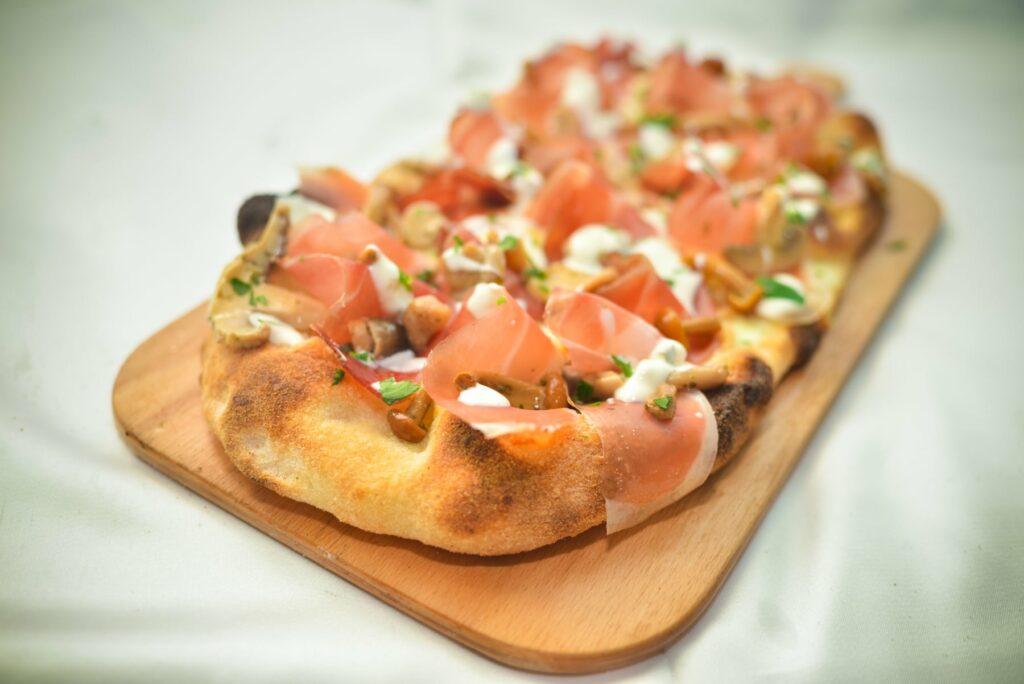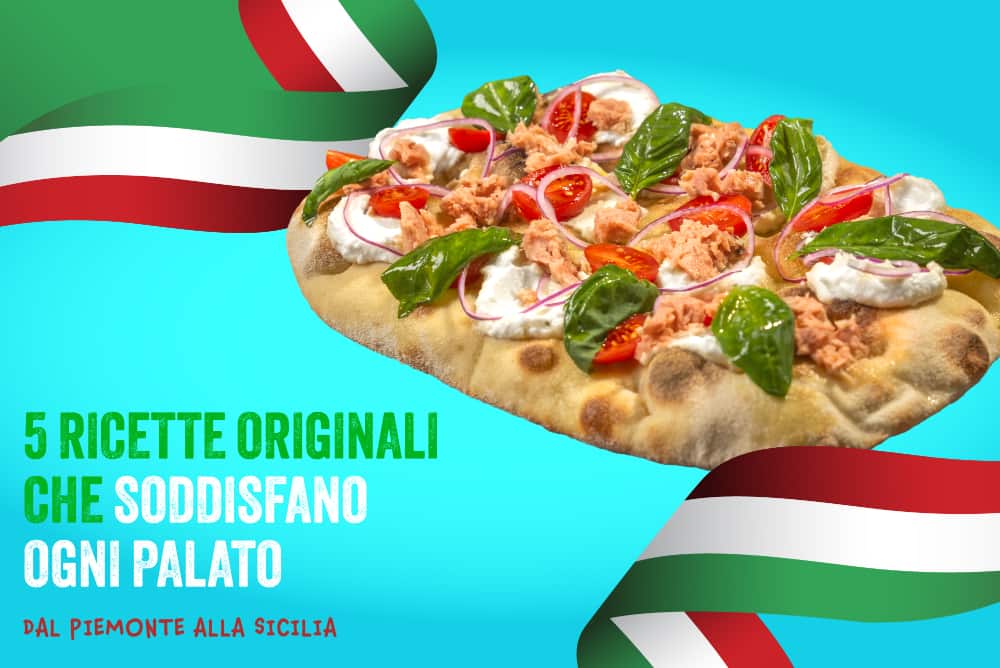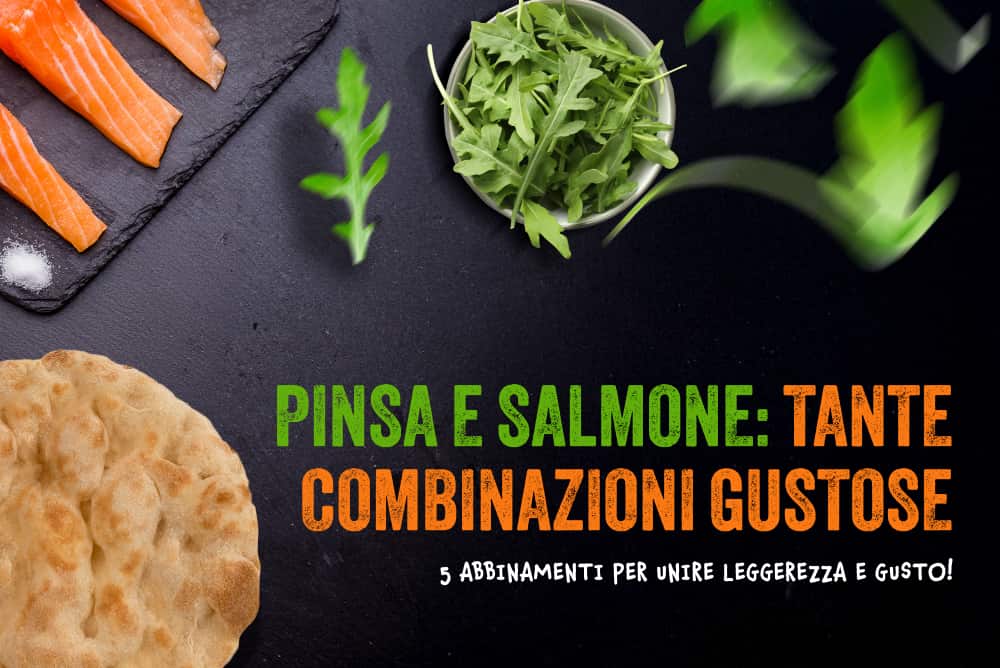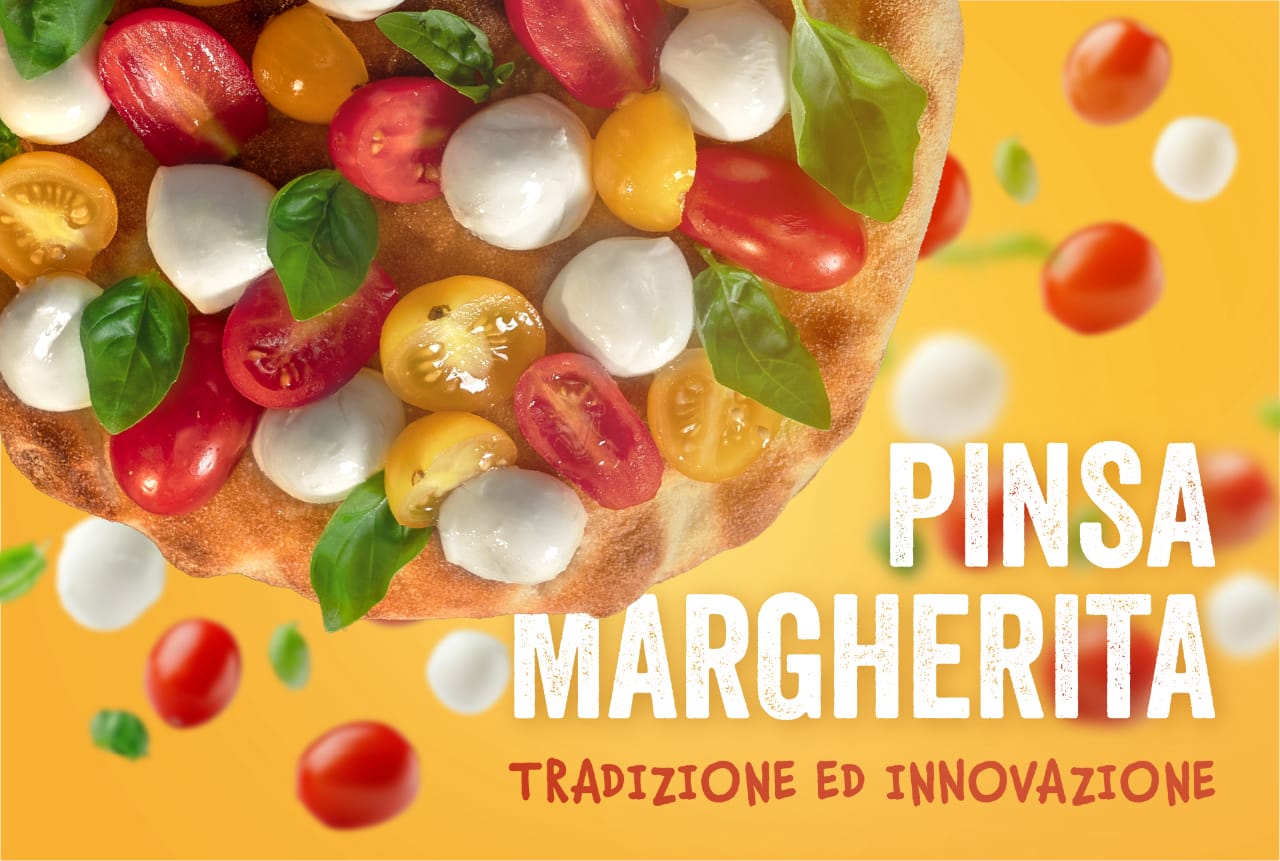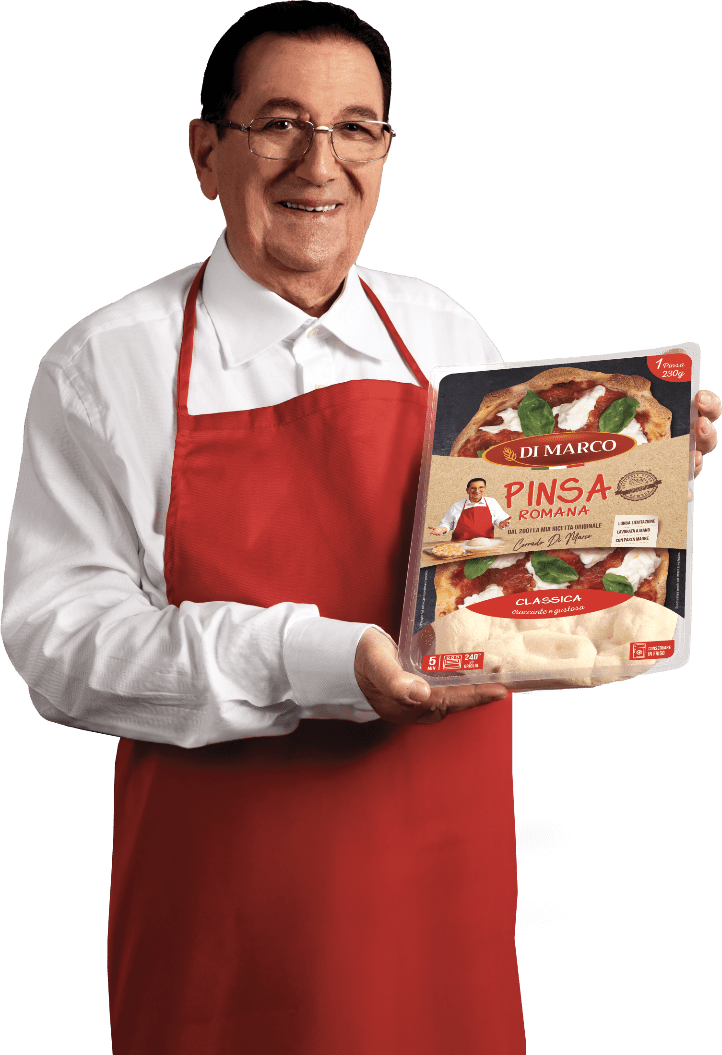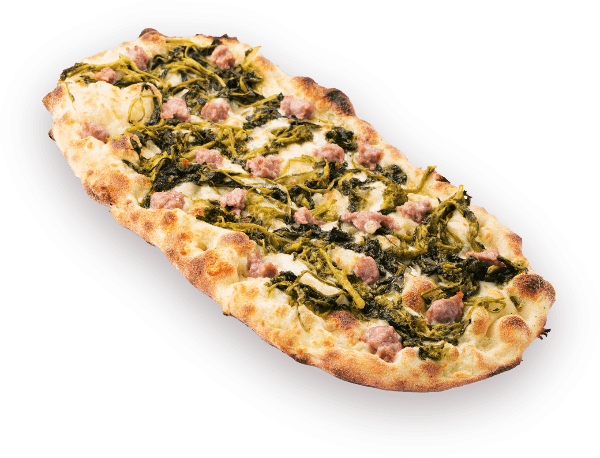Culinary evolution is an unstoppable phenomenon because innovators from every field come up with new ideas, techniques and tastes that enrich our gastronomic experience.
Sometimes, it is the combination of curiosity, scientific research, perseverance and the desire to create something new that changes old paradigms. This is exactly how pinsa was born: from an intuition of Corrado Di Marco from the constant research that followed and from the perseverance that characterises those who work every day to improve their product and feed their passion.
Ironically, not many people today wonder what pinsa is. That may be because they have already tasted it, spent an evening in a pinseria with friends, seen it on the shelves of supermarkets or ordered it in a pizzeria intrigued by its name. What everyone is interested in is the difference between pizza and pinsa, obviously going beyond the appearance (i.e., their shape). And rightly so: the two are apparently very similar, but inside, the differences are important.
What is pinsa romana?
Pinsa Romana is a light, highly digestible alternative to pizza. It features a high-hydration dough, a long fermentation period, and a texture that is crispy on the outside and soft on the inside.
Unlike traditional pizza dough, pinsa is made from a special blend of wheat, rice, and soy flours, combined with dried natural sourdough starter.
First launched on the market in 2001 by Corrado Di Marco, pinsa quickly gained popularity thanks to its ability to meet modern dietary demands—lighter, healthier options. It also perfectly suits vegetarian and vegan diets.
The dough of Pinsa Romana
The secret of pinsa lies in the dough, which follows specific rules. The flour mix is not only kept secret but is constantly evolving to keep up with scientific progress and food trends.
A core feature of the dough is its high hydration level. For every kilogram of flour, the typical recipe includes:
- 800 ml of water
- 2 to 6 grams of dry yeast
- 25 grams of salt
- 20 grams of extra virgin olive oil
The dough undergoes a long fermentation process, lasting anywhere from 24 to 72 hours.
Why people love pinsa: lightness, flavor, and digestibility
Ask any regular consumer, and they’ll highlight how light and easy to digest pinsa is—without compromising on flavor. Its versatility allows endless topping combinations, making it easy to personalize and adapt to any taste.
Another key difference is texture: pinsa is crunchy on the outside and soft on the inside, setting it apart from the pizza we all know.
Pinsa vs pizza: what’s the difference?
The main difference between pinsa and pizza lies in the dough—not the shape. Pinsa uses a unique mix of wheat, rice, and soy flours, boasts high hydration, and is left to ferment for a long time, making it lighter and easier to digest. Its oval shape, crispy crust, and airy interior further define its uniqueness.
This composition also affects calorie intake: pinsa dough has lower density and absorbs less topping fat, resulting in fewer calories. That’s exactly why it has carved out a niche in the food market—as a delicious yet lighter alternative.
Why is it called pinsa?
The name “pinsa” comes from the Latin verb pinsere (or pinsare), meaning “to press,” “to stretch,” or “to flatten.” This reflects the hand-shaped preparation of the dough into its signature oval form.
When was pinsa invented and by whom?
Although the name has ancient roots, pinsa, as we know it today, is a modern creation. It was developed in 2001 by Corrado Di Marco, founder of the company and descendant of one of Rome’s oldest baking families.
In 2001, Di Marco created an innovative dough that combined different flours (wheat, rice, and soy), high hydration, and long fermentation. His goal was to deliver a product lighter and more digestible than traditional pizza, without sacrificing flavor or texture. Since then, pinsa has grown in popularity, gaining fans both in Italy and abroad.
The types of Di Marco pinsa and where to find them
For several years now, pinsa has been a worldwide phenomenon. Gone are the days when the product was offered by just a couple of restaurants: today, we can count thousands: 7,000 to be exact.
Speaking of pinserie and quality control, in 2016 Di Marco founded the Associazione Originale Pinsa Romana as an eminent organization for the certification of pinserie. The standardisation, the training courses constantly provided by the company and the certifications guarantee that the product is not compromised in terms of quality.
Di Marco’s offer can meet the needs of consumers and of catering businesses. Consumers are offered Roman pinsa, the pre-cooked pinsa, which is available in large-scale retail outlets in several versions: the Classica and Multicereali to be stored in the fridge and the Classica Ambient, which can be kept at room temperature. The product blends the quality of Di Marco’s raw materials with the benefits of artisanal production and strict compliance with quality standards. For consumers, Roman pinsa also offers the convenience of pre-cooking: in just a few minutes, and with a little imagination, an extraordinary dish can be prepared.
Pinsa recipes: how to top your pinsa
One of the most exciting things about pinsa is its versatility. It’s a blank canvas for creative, and sometimes surprising, combinations.
The world of pinsa recipes is constantly expanding—full of experiments, bold pairings, and global inspirations. That’s why the term “pinsa + recipes” is one of the most searched and loved topics on our magazine: it highlights how this dough can adapt to countless styles, from classic to adventurous.
To start, stick with the basics: a timeless margherita with added black olives, capers, sun-dried tomatoes, and anchovies for an extra kick.
But the creativity doesn’t end there. Many chefs explore bold toppings—vegan options like cashew cheese or tofu, or exotic ingredients like steamed octopus, mango sauce, or curry to bring international flavors to the table.
We often explore pinsa recipe themes—healthy pairings, vegan ideas, summer dishes, and more. And we’re not stopping anytime soon. Stay with us, and you’ll keep discovering new ideas to try at home!

